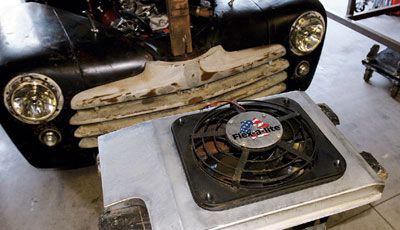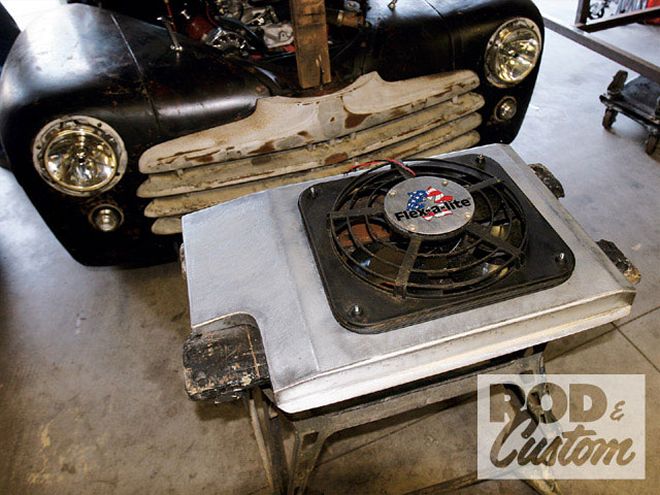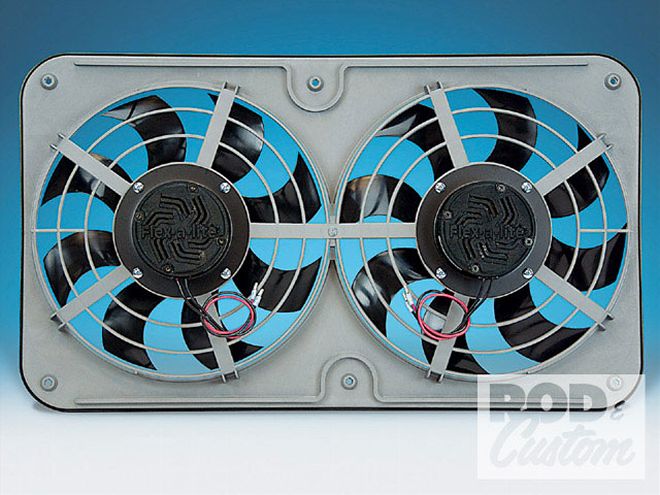

Elsewhere in this issue you can see how the guys at Walden Speed Shop repaired a '32 coupe using a minimum of specialized equipment, most of which a well-equipped home shop will already have, especially if the shop owner already has some sheetmetal fabrication experience, but what if you don't possess a sheetmetal brake or shear?
This was the position I found myself in when I needed to fabricate a custom fan shroud for my '46 roadster pickup. Sure, I'm in a fortunate position in that I could go to a number of friends' shops and use their equipment, but I wanted to show that such a project could be tackled at home with no specialized tools and still turn out a decent-looking, finished piece of work.
I always knew the radiator in my truck was a little on the small side, and coupled with the fact that it sits so low compared to the motor, an engine-driven fan wouldn't even cover half the radiator core. No fan at all wasn't an option-the radiator boiled over when I returned from a quick blast around the block when I fitted the new Pertronix distributor and coil-leaving an electric fan as one of the few options. Ideally I'd like to run two electric fans, but as you'll see, the steering box on my Caprice front clip sits up against the lower left corner of the core, meaning there wasn't enough space for two, so I sourced a low-profile 12 1/8-inch fan from Flex-a-lite which requires only 2 5/8 inches clearance, mounted it to the radiator, and set out for Bonneville on our recent tour.

While the engine ran at 200 degrees throughout the trip, the radiator only got very hot twice in traffic, and both times the air temperature was way over 100 degrees. On my return, however, my first project was to fabricate a shroud in an attempt to lower the running temperature. I knew it would probably only be a temporary fix, as a new, larger radiator is most likely the real answer, but I wanted to see what difference it would make. And did it? Read on...
Conclusion
Though the main purpose of this article is to show that it is possible to form sheetmetal and fabricate useful parts for your project using very basic tools, there is another purpose, and that's the experiment to see if the shroud actually works. And it did. And it didn't. Though the shroud keeps the temperature a good 10 degrees cooler in traffic, it actually runs a little hotter on the freeway, most likely owing to the restricted airflow through the core thanks to the shroud! If I'd planned ahead a little more and moved the fan to the right, I'd have had enough room to add a small 8-inch fan from Zirgo on the left side of the shroud, which may have made a difference. Alternatively, I may rob an idea from Spal, whose shrouds have opening vents in them for optimum airflow at speed. I think the answer really though is to fit a larger, or more specifically, thicker, radiator. Or maybe a higher-volume water pump. We'll see, it's an ongoing project. But at least the truck won't overheat in traffic for now, and it's not like there isn't plenty of that in Southern California!